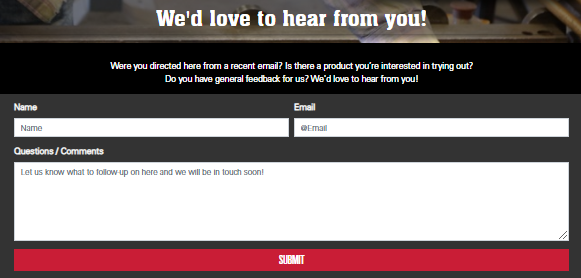04 Dec 12/04/2020
Detailing Dry Ice Gloves and Essential PPE
2020 has been tough, and it has been even harder on those who have become sick or lost their job due to COVID-19. The good news is that a vaccine is on the way in 2021!

COVID-19 Vaccine
When the virus began significantly infecting people in March and April, there was an immediate run on all personal protective equipment (PPE). Those who were not aware of PPE's importance quickly realized that protection is an integral part of most all U.S industries, especially health care.
In early December, the PPE industry is still doing all it can to meet PPE's new demand requirements, with there being still some gaps of matching supply with demand. It is important to note that there are sweeping improvements from where the industry was in early 2020. One improvement MCR Safety implemented early on was carrying a wide range of face protection, as it wasn't a core product category for us before the pandemic began. However, our motto is We Protect People, and that's not possible without stocking the protective gear people are needing. Simply put, everyone involved in the PPE industry has come a long way.
MCR Safety face protection introduced since March 2020.
Unfortunately, though, when it comes to PPE, we're not out of the woods yet. The COVID vaccine must be stored at minus 112 degrees, which can only occur with the assistance of dry ice. That temperature is so cold; metal becomes stiff. Imagine what happens to someone's hands in that environment?
For those handling dry ice, proper PPE, in the form of insulated work gloves is a must, along with safety glasses, face shields, and safety goggles. This article will highlight dry ice and the protection users require when handling this hazardous substance.
What is dry ice?

Dry ice is a solid form of carbon dioxide, which sublimates at -78.5 °C (-109.3°F). Its advantage is that it has three times the cooling energy of water, making it the ideal candidate for shipping goods across long distances. It is used in a wide range of industries:
- Commercial Shippers – transporting food
- Medical Industry – shipping biological samples and vaccines
- Restaurants – storing food
- Cleaning Solution – dry blasting

Transporting goods
It has been an essential material across many industries. However, it now becomes one of humanity's most crucial ingredients in safely getting vaccines out to the public.
Next time you exhale, remember that it is carbon dioxide gas you're flushing out. And, dry ice is the frozen solid state of carbon dioxide.
Covid-19 Vaccine Distribution

As we've mentioned, utilizing dry ice is how COVID-19 vaccines are being distributed across the world. Governments are rushing to get initial vaccine deliveries out as soon as possible. In fact, UPS is investing in mobile freezer units that will produce dry ice for transport. The below image gives you an idea of how the vaccine will be sent out.

Transporting vaccines
It's crucial for those handling dry ice to pay close attention to the dry ice manufacturer's SDS sheets. The excellent news is MCR Safety stocks much of the safety gear workers need.
What happens if you touch dry ice without gloves?

Don’t grab the ice without proper PPE!
Touching dry ice without gloves is dangerous, as it is an extremely cold material. A person can quickly be burned, like frostbite, when feeling it without proper protection. The next logical question resides around what gloves are safe to wear.
The best place to find the answer is by visiting a dry ice manufacturer's MSDS sheet. In our next section, we provide some examples of leading manufacturer MSDS sheets.
MSDS

Before choosing a glove with a polymer, one should always carefully evaluate the work application's chemical hazard. Since dry ice is technically carbon dioxide, it makes sense to review the Material Safety Data Sheets (MSDS) and look for recommended guidance.
You can perform a free search on any chemical, product name, manufacturer, CAS#, or product code in the previous link shown. So, in this case, you can type in dry ice, and you'll see numerous MSDS sheets pulled up. Be sure you evaluate the MSDS sheet for the dry manufacturer used.
Here are three of the top dry ice manufacturer MSDS pdfs:
- Continental Carbonic – dry ice SDS sheet
- Penguin Dry Ice – carbon dioxide SDS sheet
- Cee Kay – solid dry ice SDS sheet
Floridian International University also has an excellent article on safety around dry ice. As they highlight, the main two hazards from dry ice are burns and asphyxiation.
Whenever hazards can't be removed with engineering and administrative controls, personal protective equipment (PPE) becomes the focal point of deterring injuries. PPE recommended in the above SDS sheets to combat safety hazards are discussed more next.
PPE: Insulated Gloves, Face Shields, and Safety Glasses

Dry ice is cold, much colder than the standard ice coming from your freezer that keeps your beverage cold. Two out of the three SDS sheets shown above specifically mention wearing insulated clothing.
When handling it, a person must wear at least insulated gloves. The good news is we have a stocked warehouse of insulated work gloves ready for the upcoming winter season.
We breakdown each type of PPE below:
- Insulated Gloves – All three MSDS sheets above mentioned insulated gloves, and you can't go wrong with Ninja® Ice. Our Ninja Ice gloves are one of the top sold winter gloves sold by MCR Safety. But, don't take our word for it. Let us show you the glove being worn! We put the glove to the test and wore it ourselves for 20 seconds without feeling any colder temperatures. This glove fits the bill for those who will only be handling it for short periods. Plus, it's much less expensive than purchasing a brand-new Cryogenic glove.
N9690FC – Fully Coated Style
We also tested putting on a separate cotton/polyester 13-gauge glove as an additional liner. With this combination, we were able to wear the insulated glove for 90 seconds. Those who have access to disposable gloves might consider wearing them underneath, too, making it completely waterproof.
Ninja® Ice gloves are water repellant, a nice feature of it being HPT coated. However, a disposable glove would make it 100% waterproof. Also, don't forget that Ninja® Ice gloves are super-flexible, which makes them great for material handling.
All our Ninja® Ice gloves. The entire article on these gloves is here.
- Face Shields - Never overlook the importance of protecting your entire face. Whenever you're cutting or chipping dry ice, you should consider wearing a face shield to cover your entire face. We've created a full article devoted to the Fundamentals of Face Shields.
- Safety Glasses – When performing our Ninja Ice tests mentioned above, some dry ice came off and became airborne. The last thing you want is to have a -80-degree piece of ice hit your eyes.
- Safety Goggles – Continental Carbonic recommend safety goggles worn underneath face shields. More on our best safety goggles can be found here.
Also, one should always first consider using tongs when working with this form of ice, in addition to wearing protective gear.
Lastly, polymers and materials found in standard insulated work gloves are not intended for long periods of holding dry ice. Only Cryogenic gloves are designed for more extended periods of wear time. We don't offer these glove styles, but we can get you in touch with a local company that does sell them. All you have to do is leave us your information below, and someone will be in touch.
Common Questions

How long does dry ice last?
- Penguindryice says that 10 pounds of it will last for 24 hours.
How to store dry ice?
- It should be stored in an insulated cooler, with premium insulation if at all possible. However, it should never be in an airtight container. Carbon Dioxide expands, which will cause the box to pressurize and potentially explode.
How to dispose of dry ice?
- Dry ice sublimates at room temperature. However, never dispose of it in a trash can or sink, as dry ice can destroy the fixture and plumbing.
Protecting you like a Ninja!

Workers have no problem performing the work they've signed up to carry out. However, they demand to be protected while performing their job. And, they're protected by OSHA's 1910.32, which ensures they receive the protection needed to protect against the hazards faced. When it comes to dry ice, workers require both hand and eye protection.
We welcome any comments, feedback, or suggestions for how we can best protect people at work.
For over 45 years, MCR Safety has proven to be a world leader in gloves, glasses, and garments. Whether it’s on the shop floor, an oil rig, or a construction site, we are there providing solutions to workplace hazards. It’s all part of our commitment to protect people.
No matter your industry, we have the personal protective equipment you need.

Learn more about MCR Safety by checking out our most recent video. For more information, browse our website, request a catalog, find a distributor, or give us a call at 800-955-6887.
About the Author
Latest Articles













